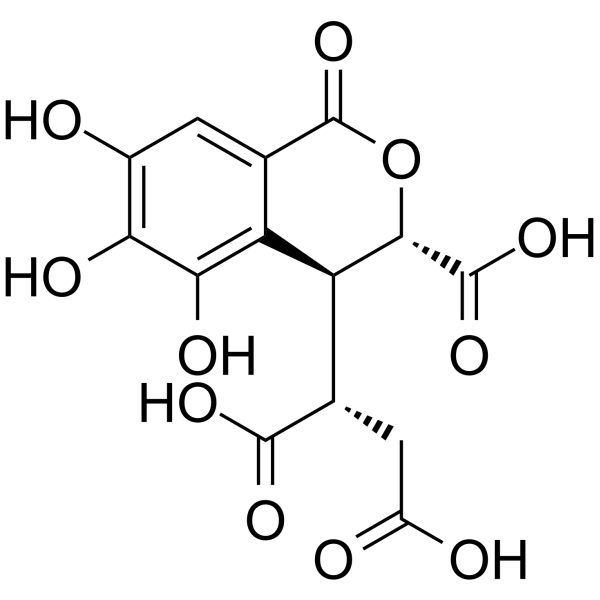All AbMole products are for research use only, cannot be used for human consumption.

Chebulic acid, a phenolcarboxylic acid compound isolated from Terminalia chebula, has potent anti-oxidant activity, which breaks the cross-links of proteins induced by advanced glycation end-products (AGEs) and inhibits the formation of AGEs. Chebulic acid is effective in controlling elevated metabolic parameters, oxidative stress and renal damage, supporting its beneficial effect in diabetic nephropathy.
| Molecular Weight | 356.24 |
| CAS Number | 23725-05-5 |
| Solubility (25°C) | DMSO 150 mg/mL |
| Storage |
Powder -20°C 3 years ; 4°C 2 years In solvent -80°C 6 months ; -20°C 1 month |
| Related Others Products |
|---|
| 4-O-Galloylalbiflorin
4-O-Galloylalbiflorin is a natural product that can be derived from the root of Paeonia lactiflora pall. |
| Licoricesaponin E2
Licoricesaponin E2 is a triterpene saponinthat can be found in Glycyrrhiza inflata. |
| Uralsaponin B
Uralsaponin B is a natural product. |
| Daturataturin A aglycone
Daturataturin A aglycone is a natural Steroids isolated from the herbs of Datura tatura. Daturataturin A aglycone can be used for research related to life sciences. |
| (4->2)-Abeo-16-hydroxycleroda-2,13-dien-15,16-olide-3-al
(4→2)-Abeo-16-hydroxycleroda-2,13-dien-15,16-olide-3-al is extracted from the unripe fruits of Polyalthia longifolia var. pendula. |
All AbMole products are for research use only, cannot be used for human consumption or veterinary use. We do not provide products or services to individuals. Please comply with the intended use and do not use AbMole products for any other purpose.


Products are for research use only. Not for human use. We do not sell to patients.
© Copyright 2010-2024 AbMole BioScience. All Rights Reserved.
